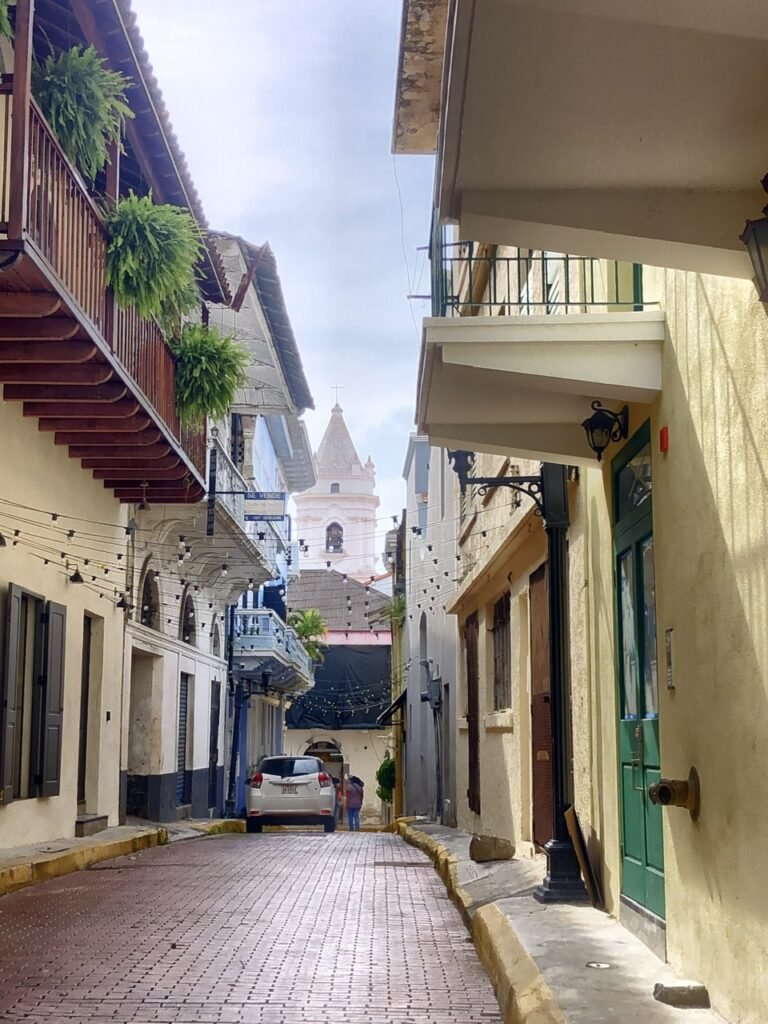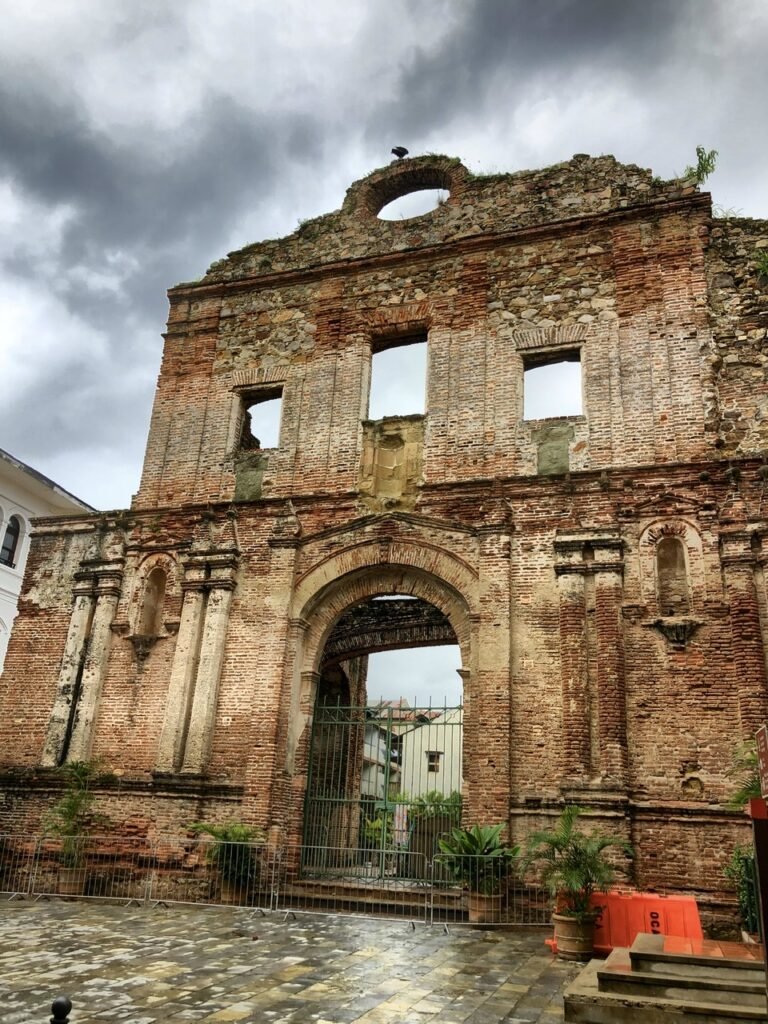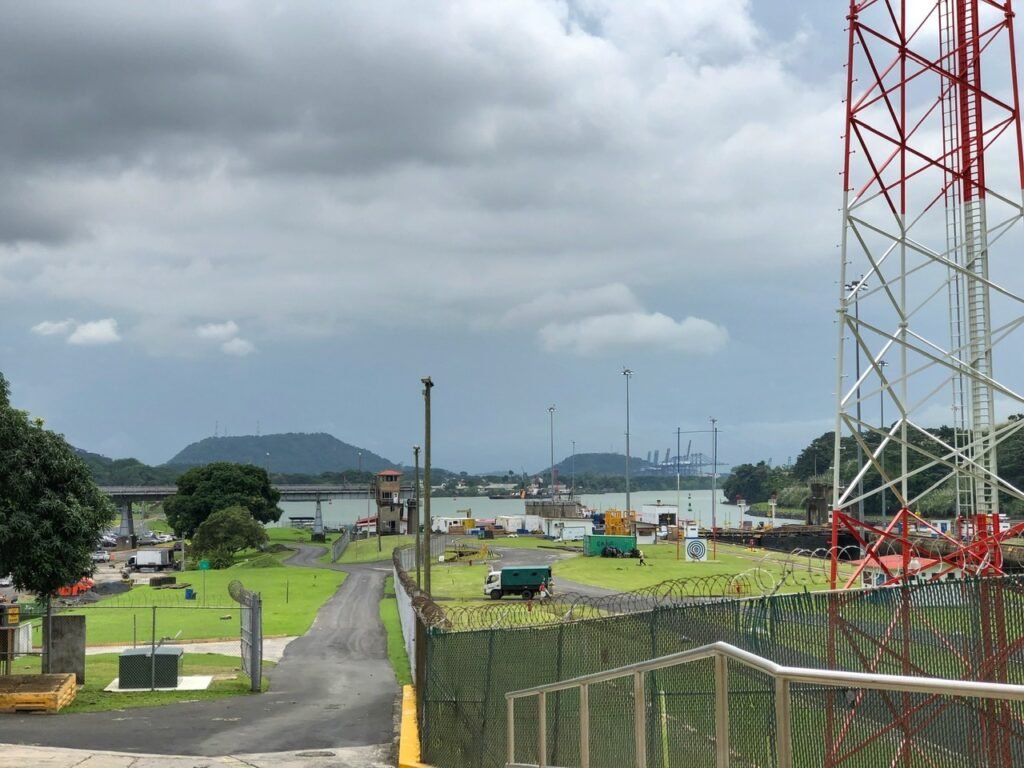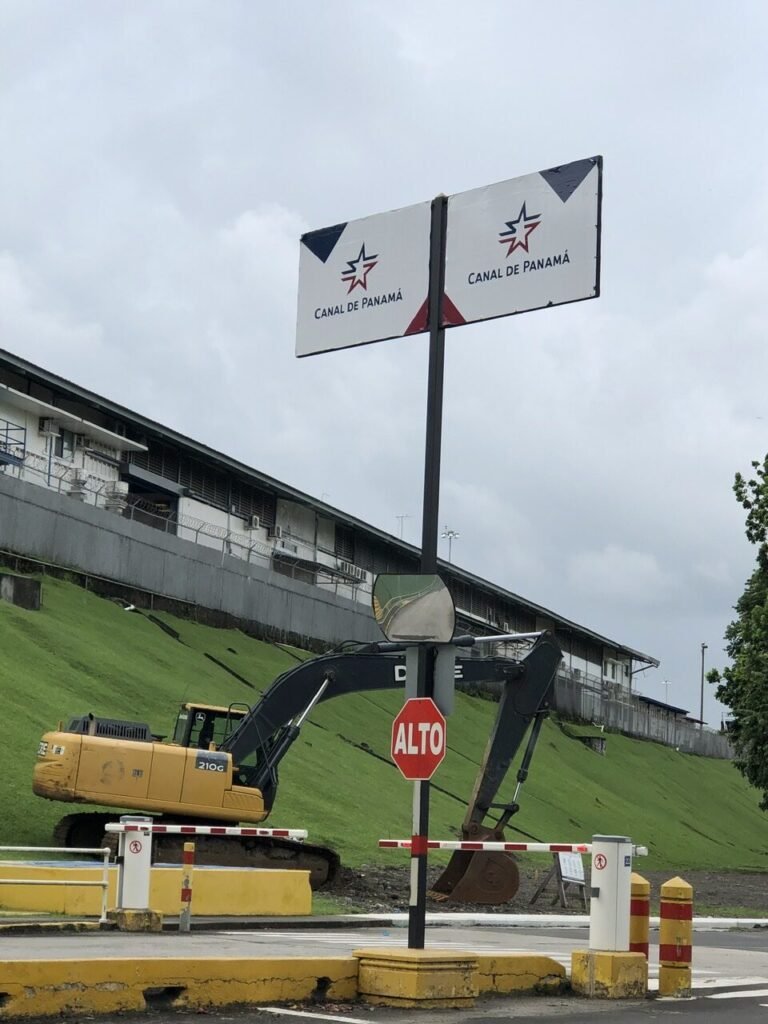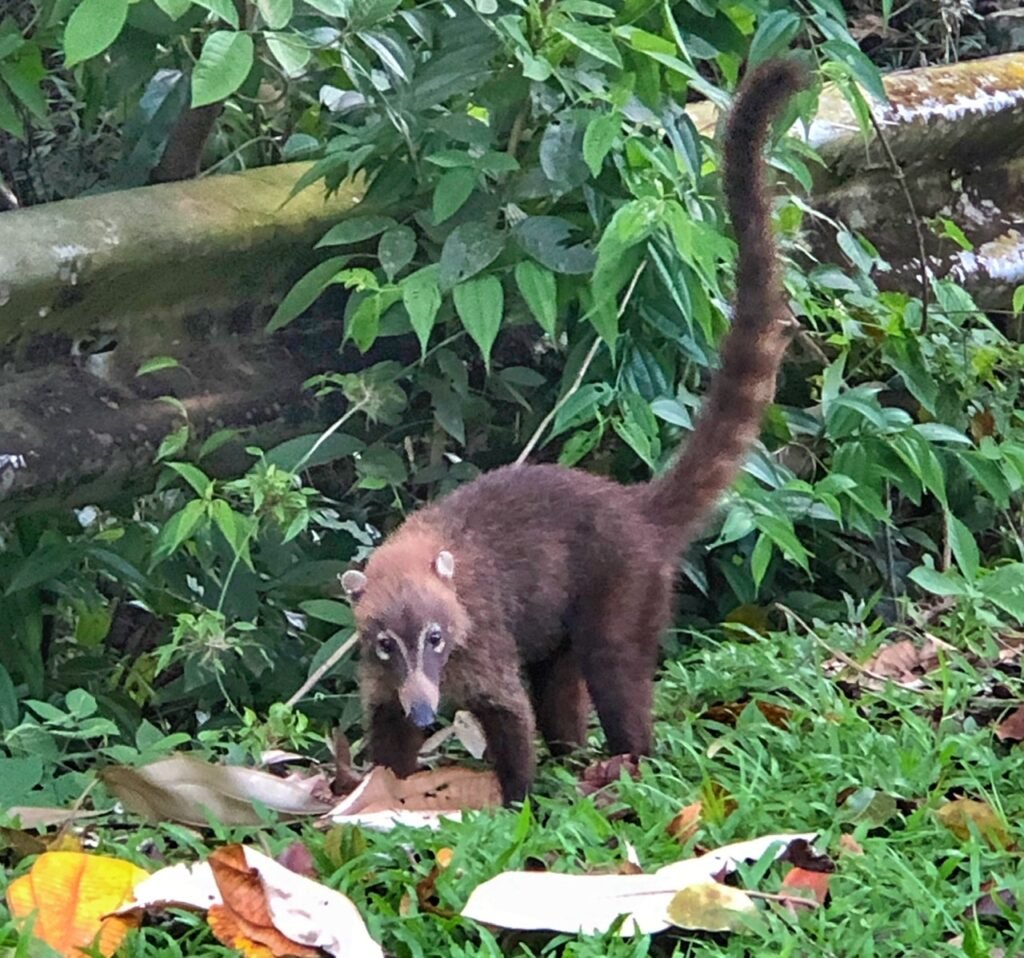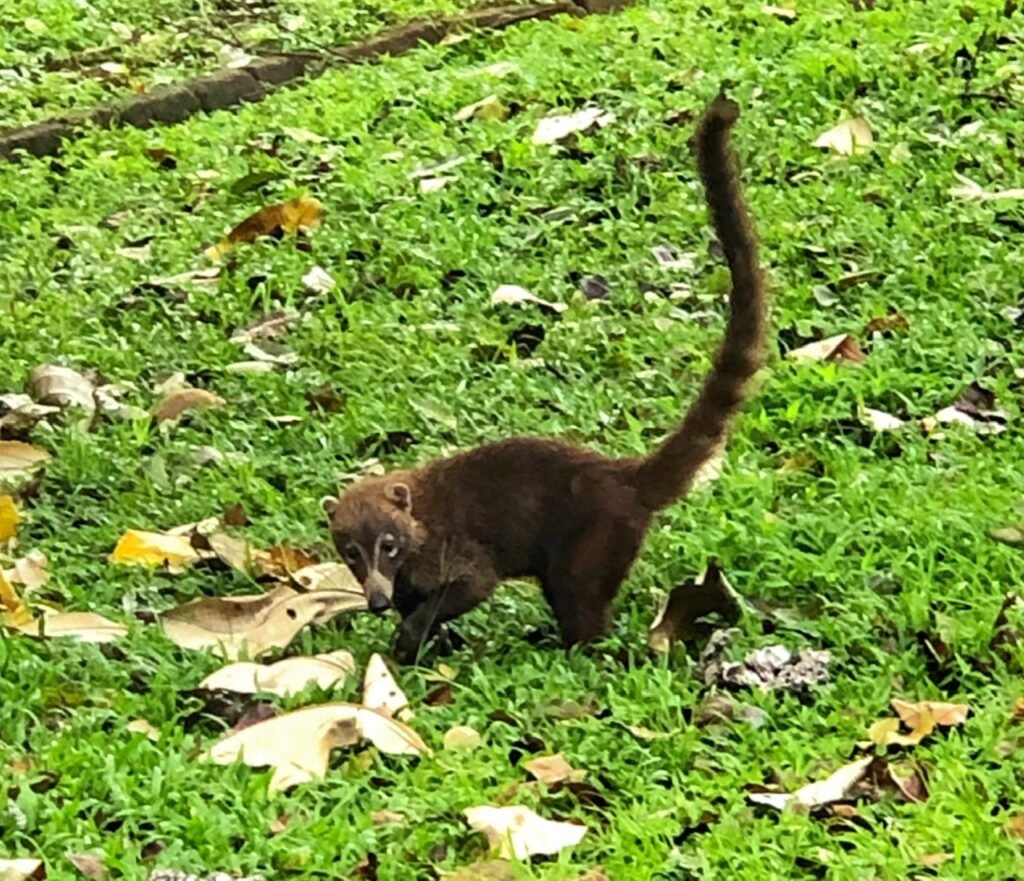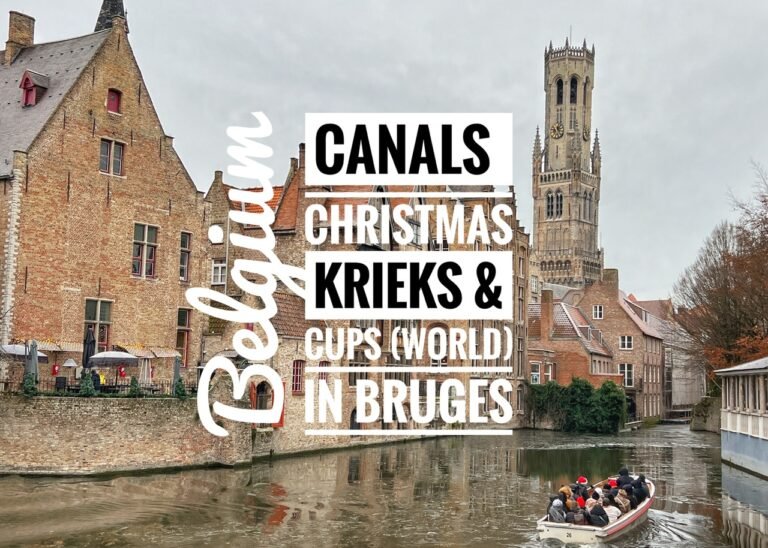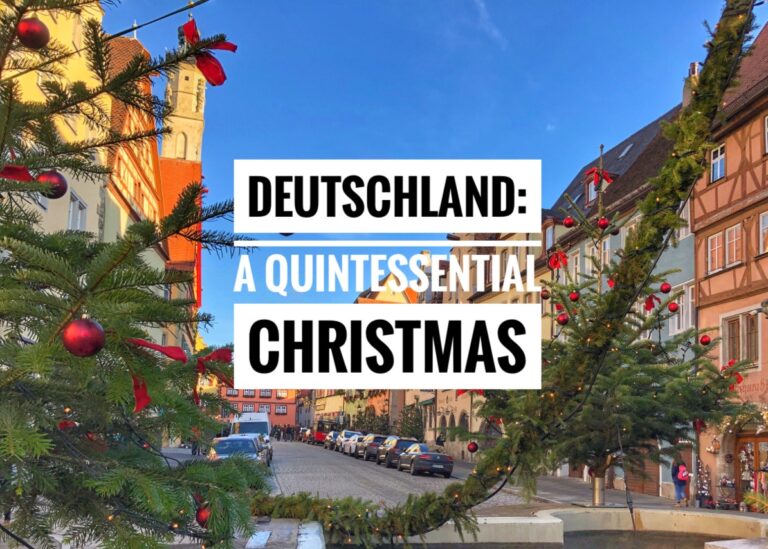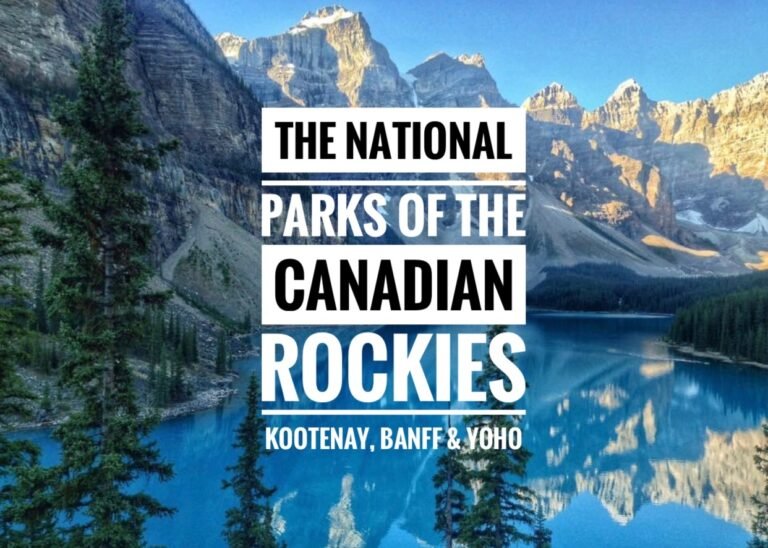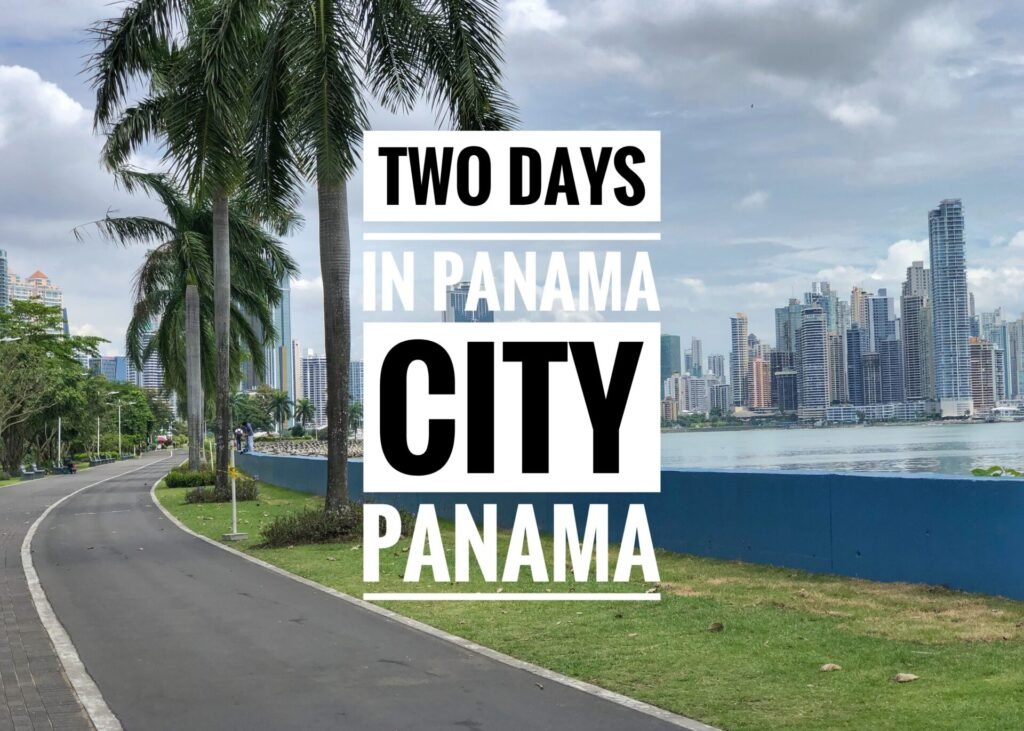
After a 16-hour red eye with two layovers from Vegas (hey, it was free!), it seemed fitting that on our three-year nomadaversary we were welcoming a new country…what would be our home for the next three months (although as Americans, we do get six months on arrival). Heading due south from Miami, one of most unfamiliar things about flying into Panama City is one moment you’re gazing at the Atlantic Ocean, then some jungly-looking land happens, and five minutes later you’re over the Pacific. With a dip and a turn of the plane, you then encounter a metropolitan skyline that looks as foreign to typical Central America as it gets. In fact, it kinda resembles Miami. It’s all simply bizarre.

When we landed in Panamá (which the city is known as), we only had a day and a half to get a taste for the city before venturing off to our housesit on the Azuero Peninsula.
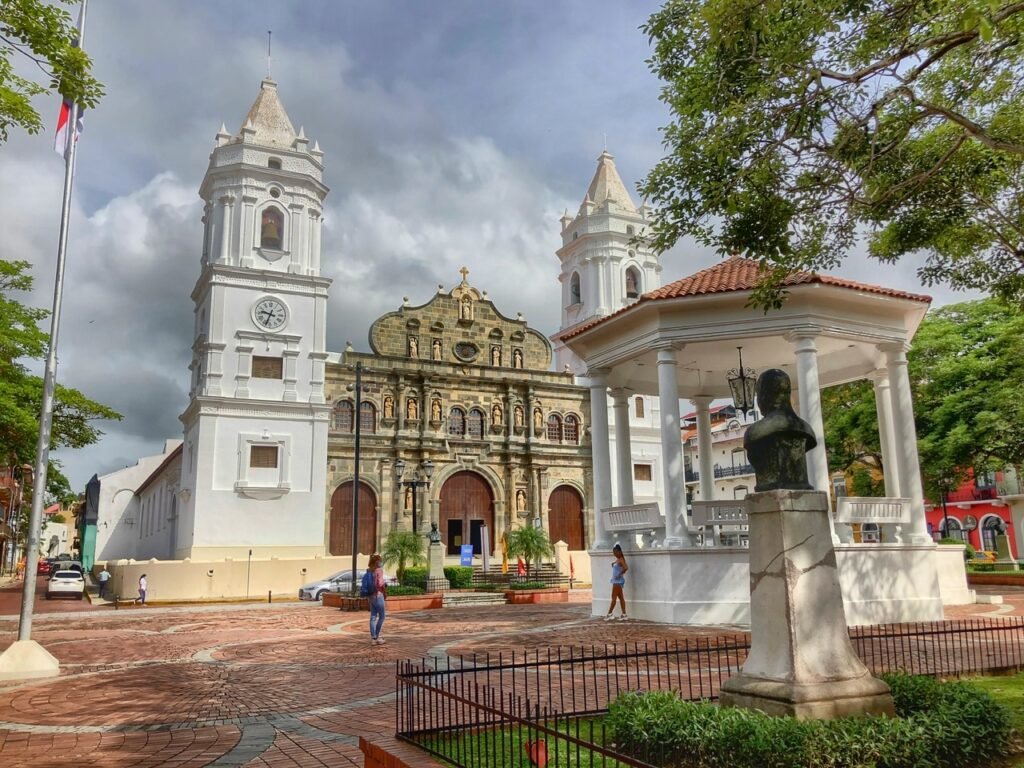
It immediately felt good to be back in Spanish Land. We spent our one day exploring Casco Viejo, the charming and pulsing historic heart of Panama City. It was in this square, Plaza de la Independencia, Panama declared its independence from Colombia on Nov 3, 1903. The Metropolitan Cathedral dominates the square. Construction began in 1688, but was not completed for 108 years. The Spaniards sure liked to take their time on cathedrals…

A mural celebrating the values and lifestyles of the people of Panamá. It’s located on Calle 5A, a quick path jutting out over the water near Plaza de Francia.
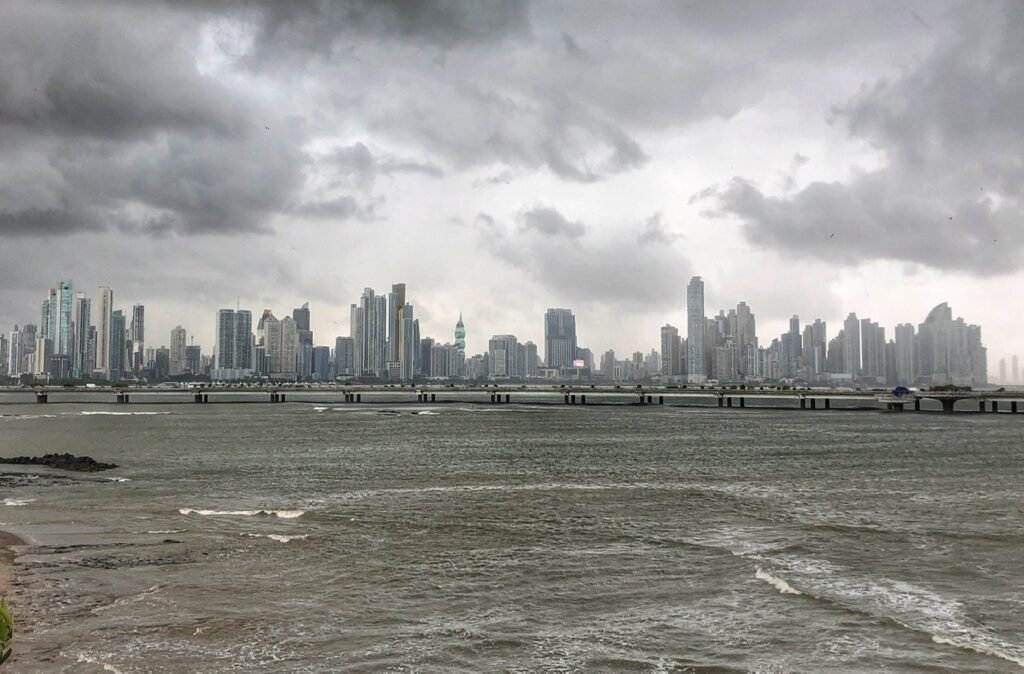
Across from the historic heart, the ostentatious skyline of Panamá, the “Miami of Central America,” and the gateway between Atlantic and Pacific has around 900,000 in a country of 3.5 million people. Panama has seen dramatic growth since taking over the Panama Canal in 2000 from the U.S. That prosperity can be seen in Panama City’s rapidly developing skyline. The city oozes wealth, lifestyle, a refined banking sector, exclusive real estate options, and huge modern American-style malls.
However, many have not yet seen the benefits, and the country still suffers from widespread poverty. It’s astonishing that so few of those 3.5 million seem to feel the benefits — especially Panama’s youth. More than half the country’s children are poor, and almost a fifth suffer malnutrition.

Although we didn’t see the canal this time, (we will in October), we got a taste of its effects on the Panamanian people through the local art. As you can imagine, the building of the Panama Canal which opened in 1914, wasn’t exactly the best news for Panamá. It split not only the city, but the entire country in half and gave the US possession of the area surrounding it for nearly a 100 years with little economic benefit. During this time, many Panamanian people grew to resent the United States because of the canal’s symbol of American imperialism. It was completed at a cost of more than $350 million and was the most expensive construction project in U.S. history to that point.

The Canal Zone was 553 square miles inside Panama and was essentially a political enclave of the US that cut the country geographically in half from east to west (yes, Panama is east/west not north/south as your mind wants you to think). Not surprisingly, it was marked off by a fence which was actually “just for pedestrian safety.” The US had its own courts, police, and civil government, which became a cause of conflict between the two countries. Over time, major rioting and clashes occurred in the 50’s and 60’s. These riots led to the United States easing its controls in the zone. For example, Panamanian flags were allowed to be flown alongside American ones. (Wikipedia)

Our hostel where we stayed for two nights: Bodhi Panama City. It was very quiet, tucked back into the jungle away from the bustle and included breakfast and a private room. It was located about a 15 minute walk from the historic center. ($27/night.)

It was wonderful to start our trip to Panama immediately hearing and seeing the sights and sounds of the jungle.
Having coffee and tea on the patio. And…mmmm…pancakes and gourmet syrup. How quickly we are forced to forget the valuable syrup lessons we learned in Vermont.

A church on the walk to the centro.
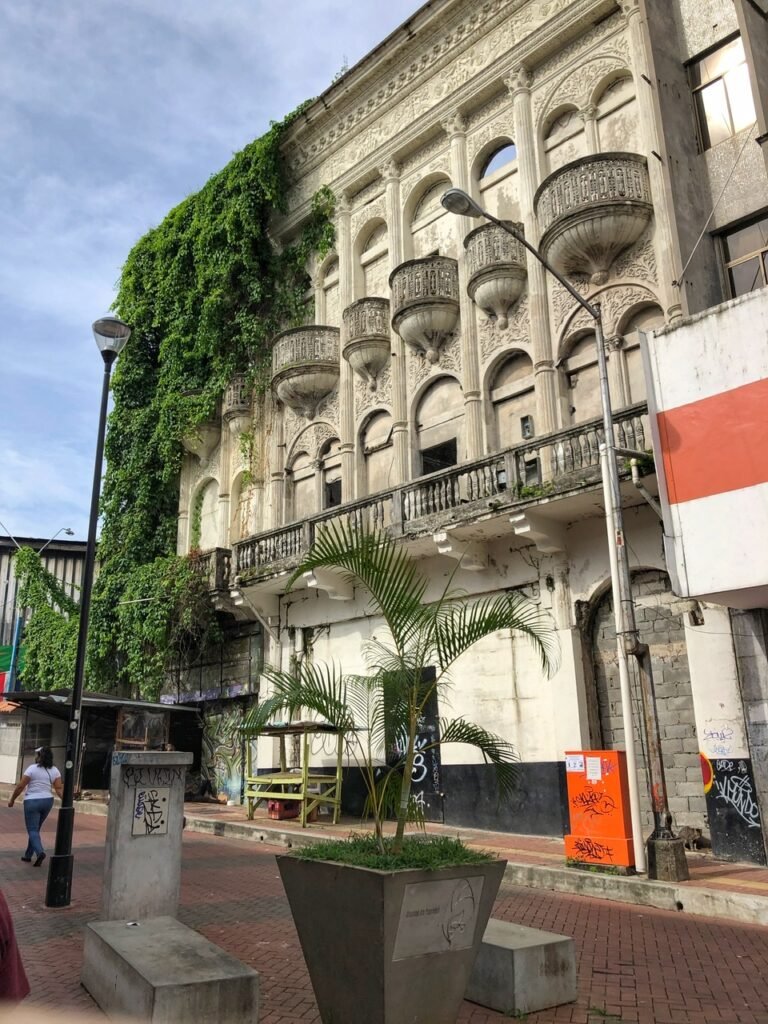
Loved the balconies!

Holy avocado! Yep. That’s what that is. I think we’re gonna like it here! And those massive eight-course avocados cost $.75 each.

We had a hard time identifying what the historic heart of Panama reminded us of. Cities it resembled included a mix of New Orleans, (all the balconies), Stone Town in Zanzibar (je ne sais quoi) and a blend of cities throughout Mexico.

The lottery is a BIG deal in Panama. People line up every Sunday and Wednesday to buy in this somewhat complex lottery system. (Side note: you’ll notice everyone is still wearing masks in Panama. It’s federally mandated and people follow the rules here! There is also a curfew.)
A lovely side street in the centro. We loved the balconies.

Alto or Pare to stop? In Panamá, we’ve seen both.

Cathedral Plaza
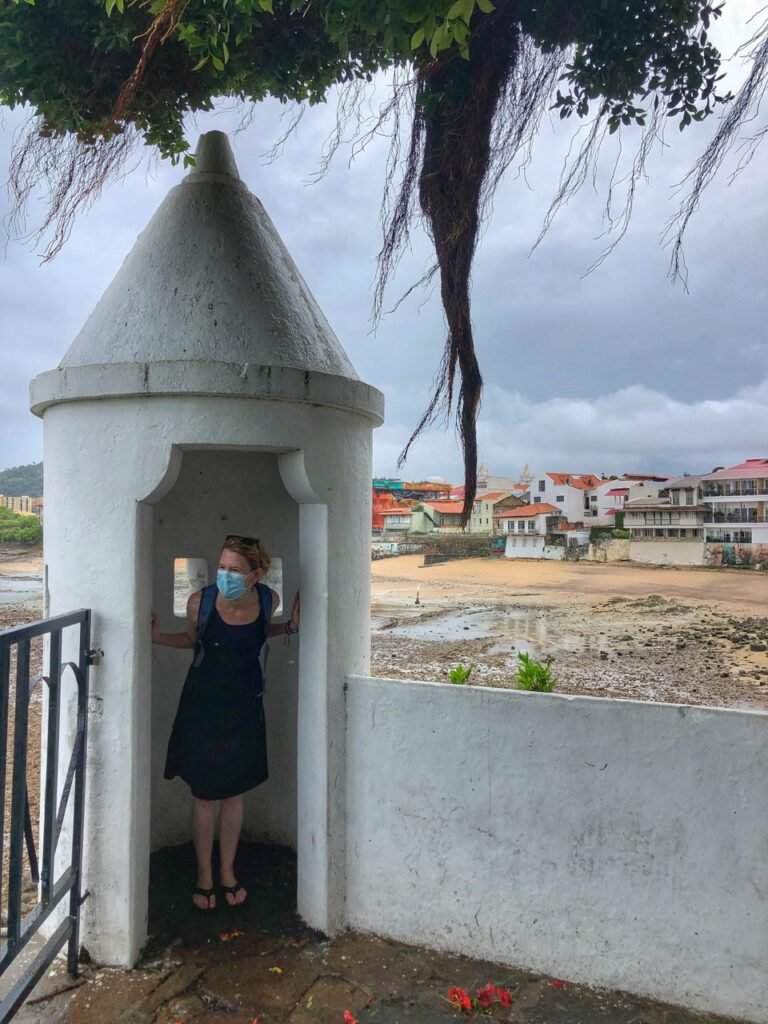
We got stuck in a pretty wicked rainstorm and hid out in a shop with two not-very-friendly shopkeepers. (Yes, it’s rainy season 🙂 We then relocated to the waterfront and hid in this little Princess tower near Plaza de Francia. (Side note: on our first day in the city, we noticed that the locals seemed a bit guarded and not overly friendly, which was a big switch from our time in Mexico.)

Plaza de Francia
The Arco Chato is definitely one of the more iconic spots in Panamá’s historic center. The church was built in 1678 by Dominican friars and destroyed in 1756 by a fire, tumbling to ruins at that time. But the most famous aspect is the actual Arco Chato, or Flat Arch, that spans from one side to the other, at about 35 feet high and spanning 49 feet. There aren’t any supports, and the fact that it remained standing was one of the things that local advocates pointed to when talking up Panama City’s seismic stability when the choice for where to build a canal linking the Pacific and Atlantic oceans was down to a choice between Panama and Nicaragua. (havecamerawilltravel.com)

A unique repurposing of plastic bottles and utensils.
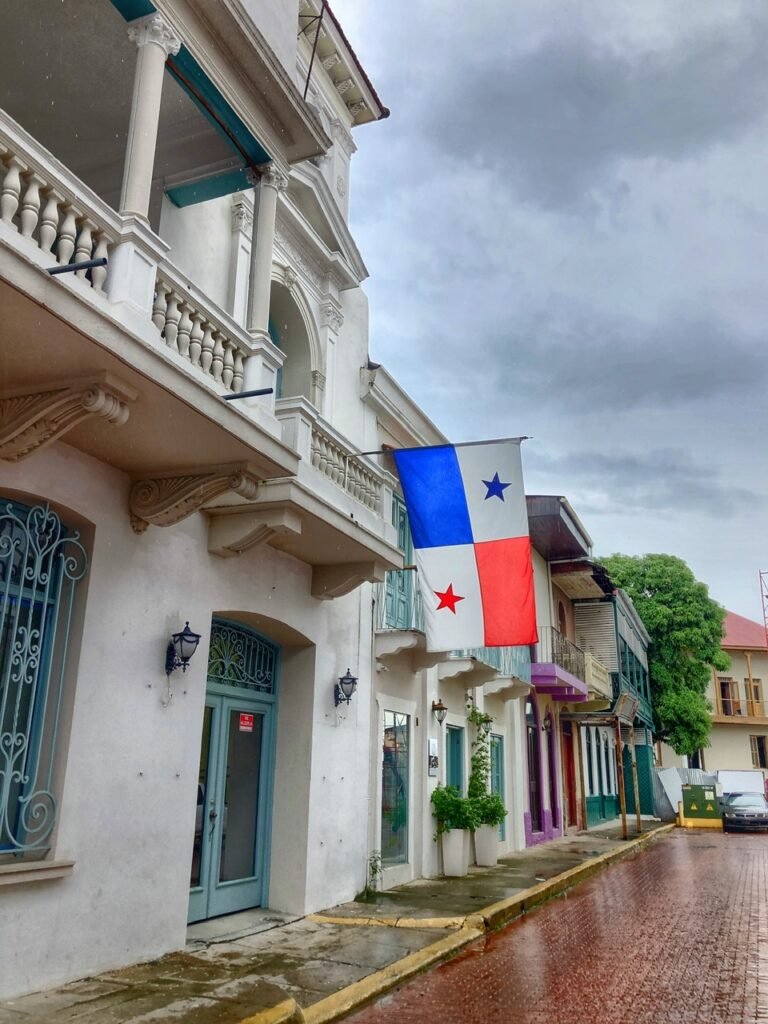
The Panamanian flag. The white in the flag represents peace. The blue star is symbolic for purity and honesty, and it also represents the Conservative party. The red star stands for authority and law, and it also represents the Liberal party of Panama.

Iglesia de la Compañía de Jesús…more ruins. This time of a Jesuit temple and convent that functioned as so until 1767. While there, we were excited to see them taping the “Panama Race”, which aired on July 7 for its first episode. It seemed to have a similar vibe to “The Amazing Race.”
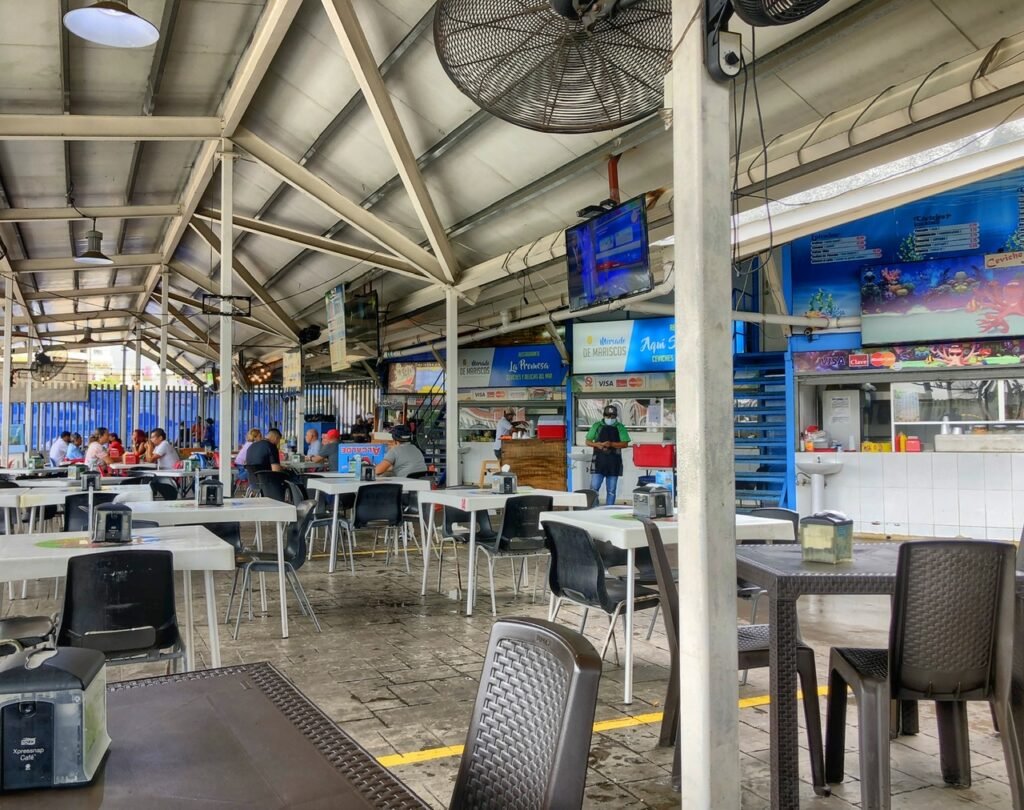
Heading down to the waterfront, we were excited to have fresh seafood at the Mercado de Mariscos. As soon as we meandered through the gate to a nearly empty food court, we were swarmed by very eager locals flopping English menus in our faces. Hmmm. This seemed a bit touristy for our tastes. Still, it had to be amazing, right?
Wrong. It started with two mediocre and overstuffed styrofoam cups of Panamá’s version of ceviche. One tasted like it was drowned in mayonnaise and the other had so little flavor you hardly wanted to continue eating.
These ceviches were sadly the best part of the meals. Although the main course, a seafood medley with plantains, looked lovely in the menu photos and in fact, this photo, it was awful. The squid, fish and shrimp were way over cooked, a complete mess to eat, and lacked flavor. We were appalled when the waitress slapped down a $22 bill for two styrofoam ceviches and one entree (no drinks). After this we realized we were off our game and vowed to get back to our roots of avoiding anywhere where people thrusts English menus at you ? Let’s just say we started off our time in Panama missing Mexico.
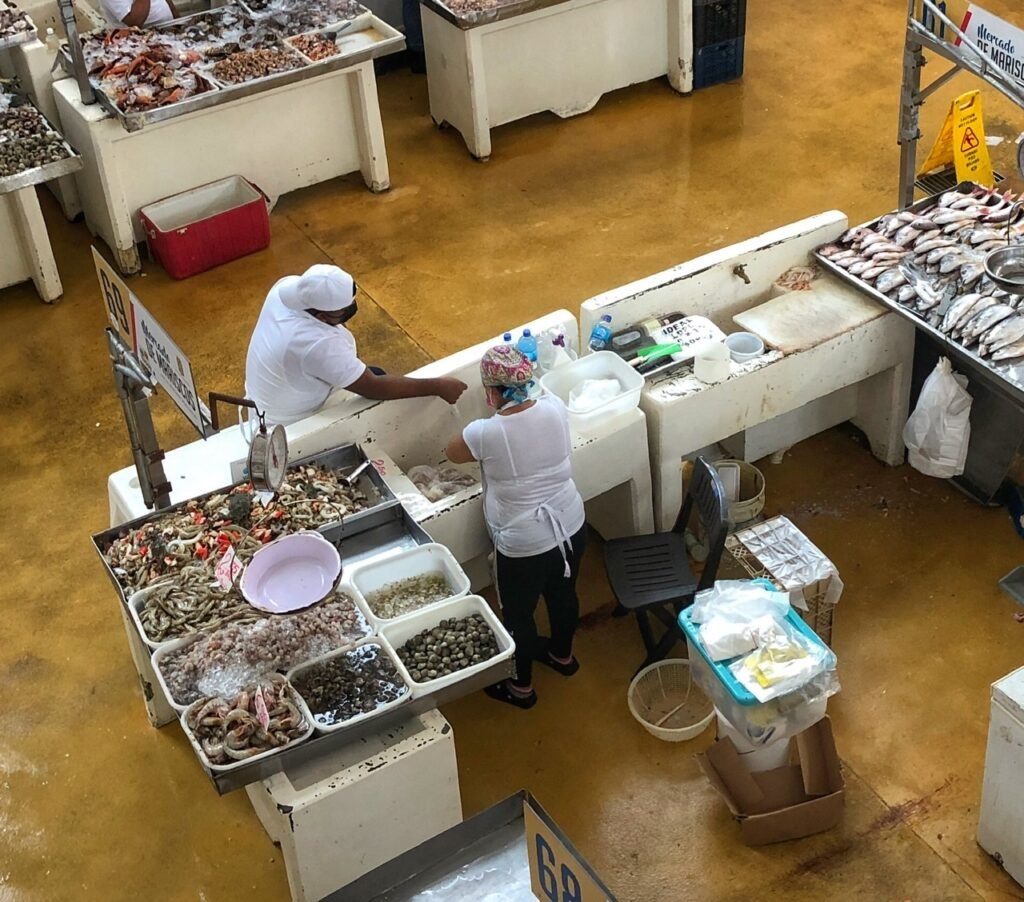
Watching workers at the seafood market.

A vibrant mural. We still have yet to see a toucan in Panamá!
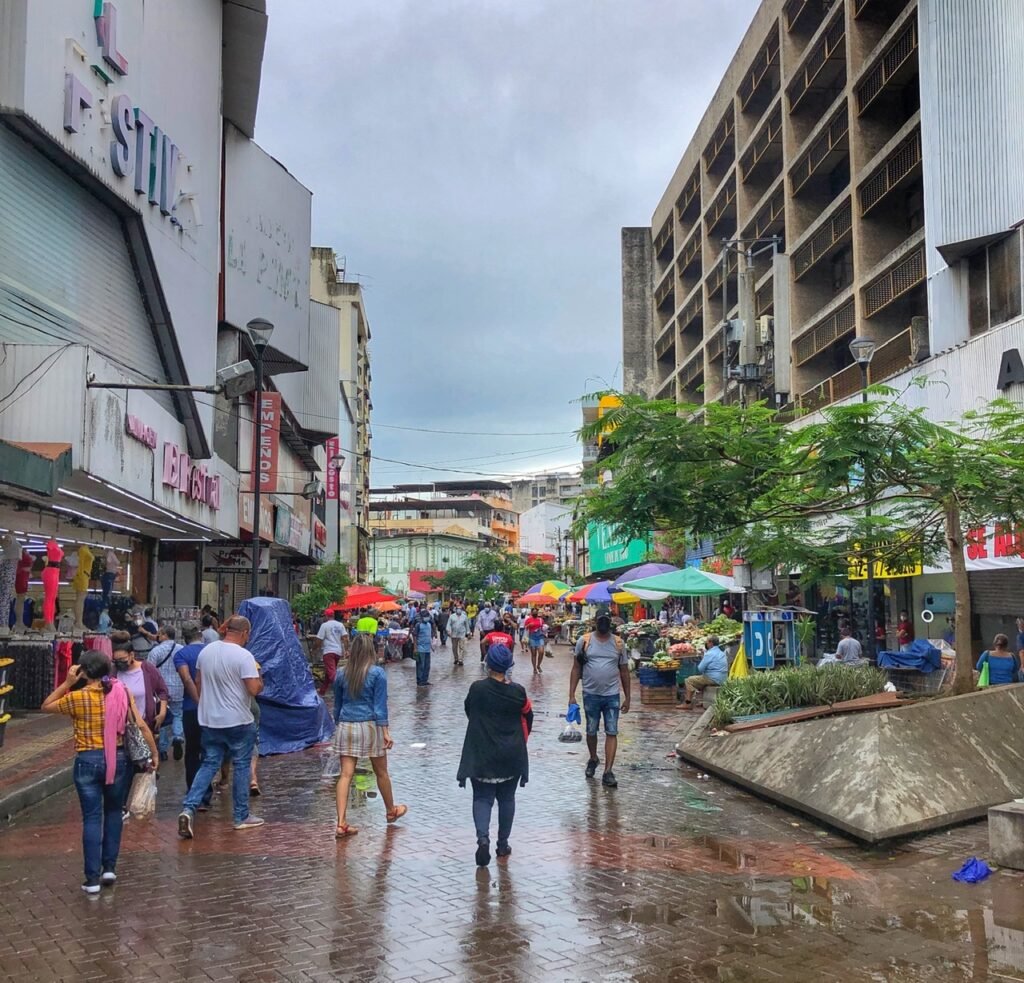
The pedestrian thoroughfare connecting the area near our hostel with the historic center. Not the most lovely, but fully functional and appreciated for its walkability.
We would discover early on that Panama is bursting with all kinds of new creepy crawlies for us to explore. The first of many, many many of these spiders we would encounter. We think it’s a non-poisonous type of banana spider, but aren’t certain? Most are about as big as your palm. And also, centipedes galore!

Checking out a Golden beer and the brewery scene at La Rana Dorada (The Golden Frog.)
Dinner was thankfully much better than lunch at Cafe Ruigar. Greg had traditional Panamanian chicken rice with plantains and Mandy was able to surprisingly go off the grid and had shushaka, a North African dish made with tomatoes, onions, peppers, spices and eggs. Mmm. She’s gotta learn to make this one!

So many cats around the city. Most of them fortunately seemed taken care of.

A Panama Hat store. Surprisingly these hats actually don’t originate in Panama, but in Ecuador.
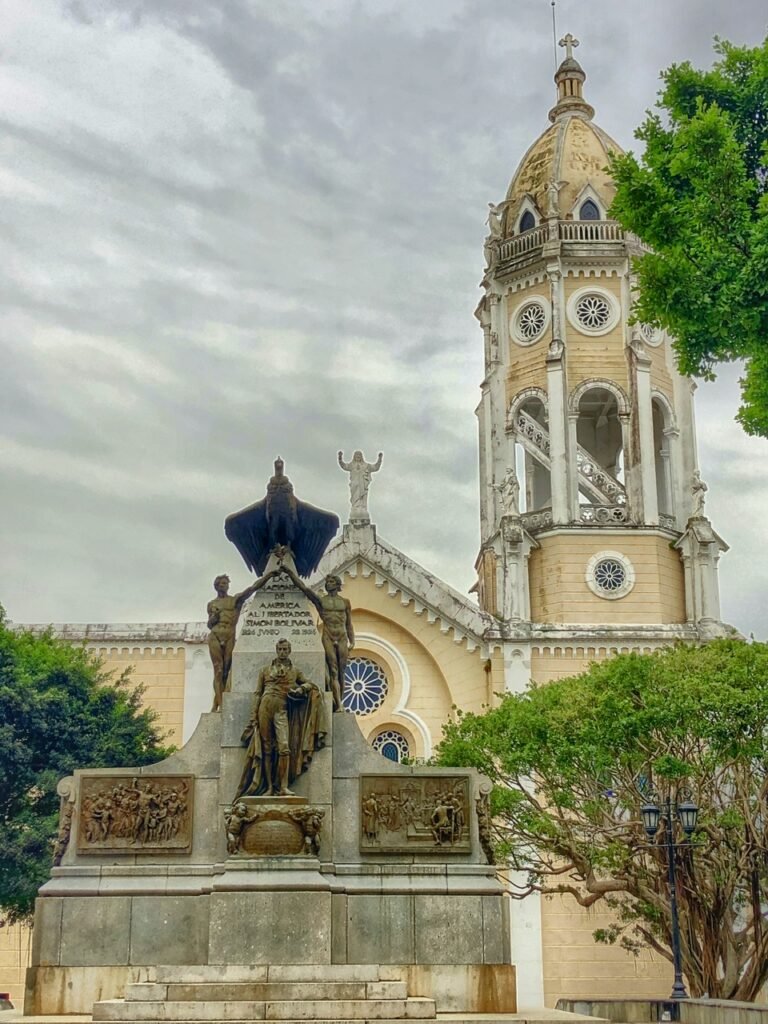
The church at Plaza Bolivar has a eye-catching and distinctive scramble-to-the-top tower. It was closed.
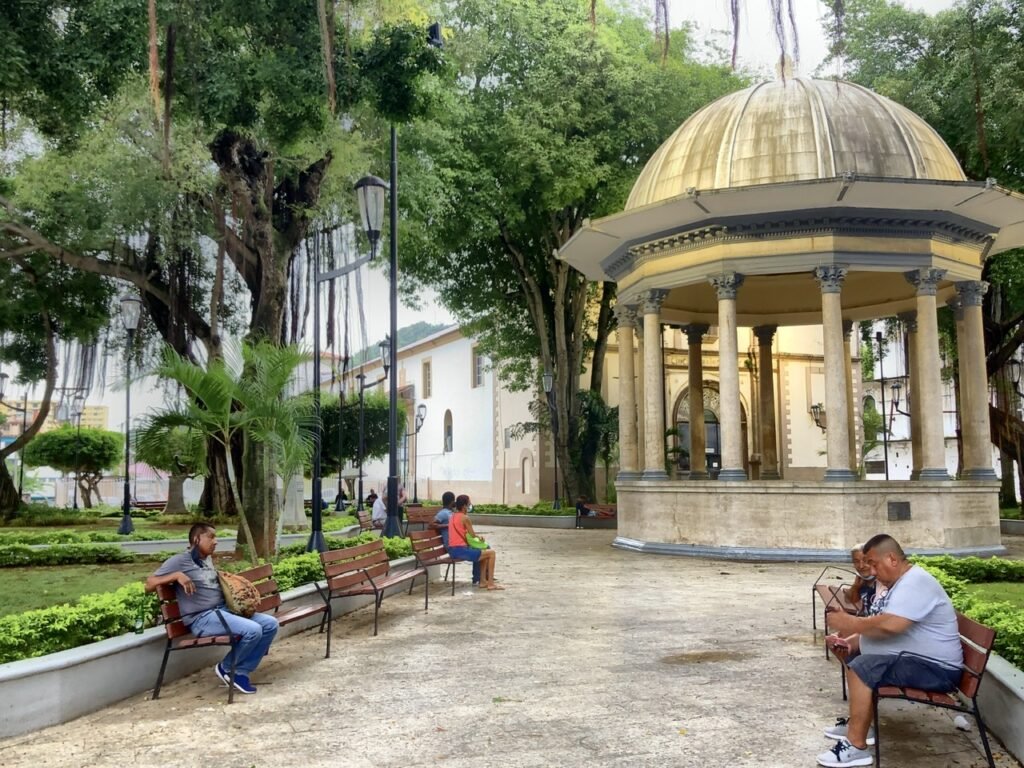
Plaza Santa Ana seemed very similar to squares we had seen in Mexico. Except more green. Everywhere is greener in Panama, which is a godsend.
Panama City: Round 2

As expected, it was quick trip coming back through Panamá (City). In fact, our main goal was simply seeing the canal and the attached museum which supposedly was open. What the website didn’t tell us is that, while it’s open, all the exhibits are closed off and you’re basically breezing through the museum on a partitioned off COVID friendly walkway en route to the viewing platform where you can watch the ships on the locks. Argh. And when we went, a ship wasn’t due it for four hours. Double argh. So basically we would have paid $10 each to walk in a building and look at the same canal we could see from the road without learning any new knowledge or seeing the highlight of a ship. Thus…knowing we’re coming back for another housesit, we opted to skip the canal this time and save it for our next visit. We know. Lame. Above is the canal as seen from our bus as we re-entered Panamá City.

We went out of our way to stay near the canal to make visiting it easier, which also was in the former “Canal Zone” that used to be U.S. sovereign territory until the hand over of the canal to Panama at the beginning of the 21st century. Our Airbnb was coincidentally about a five minute walk to the US Embassy, as well as this massive, and seemingly out of place (and active) US military cemetery. Veterans from as far back as the US civil war and Mexican American wars, as well as both world wars are buried here.

Another Ameri-anomaly was a giant Mormon temple within the same vicinity. Seriously….?!
This time around we stayed at Casa Simone, an Airbnb created by a friendly Panamanian who spoke such amazing English we thought she wasn’t from here ($32/night.) It was the perfect place for a couple nights…in a super quiet neighborhood, with mandatory A/C, surrounding by plants and jungle birds, and very cozy. In this photo, you can see that we were eating our grocery store peas with coconut and ceviche on the floor, because we hadn’t yet discovered her nicely provided folding TV table. She even had everything branded with “Casa Simone” and a welcome manual. Very professional.
Us. Trying to break into the canal. Ha. Stop. We’re not going anywhere ?

Giving up, we went to see the other side of Panamá City, on the Costera, which is a sweeping (and hot!) walkway on the waterfront of the city.
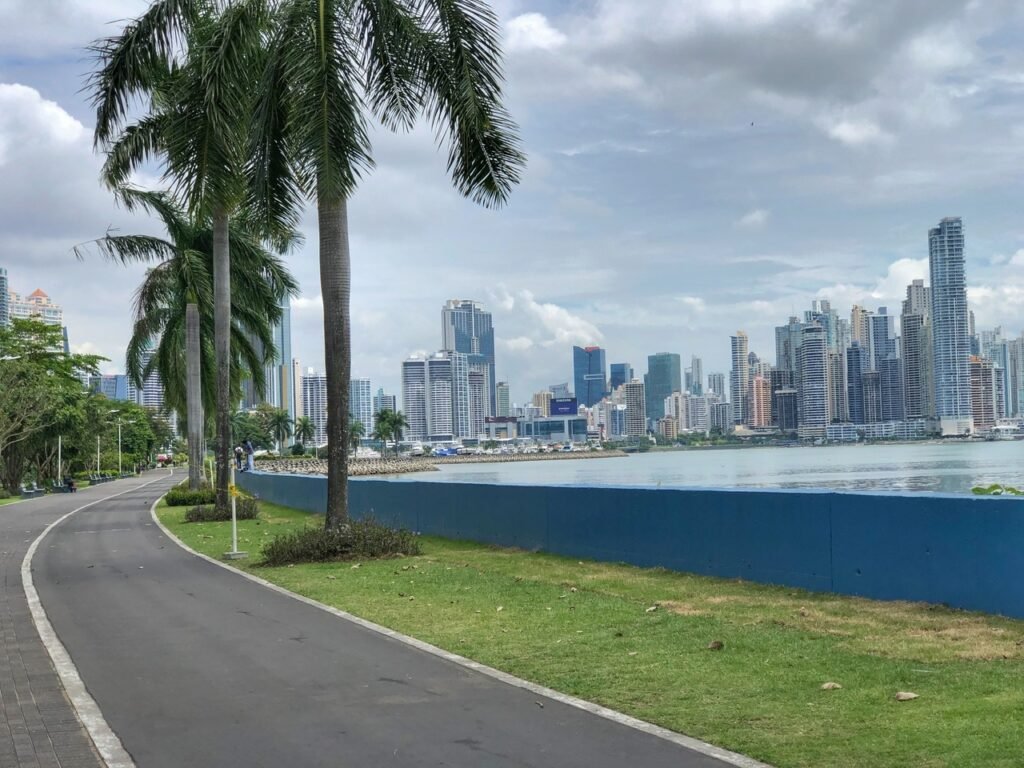
This gave us phenomenal views of the Miami-esque skyline and reminded us again that we didn’t want any part of it ?
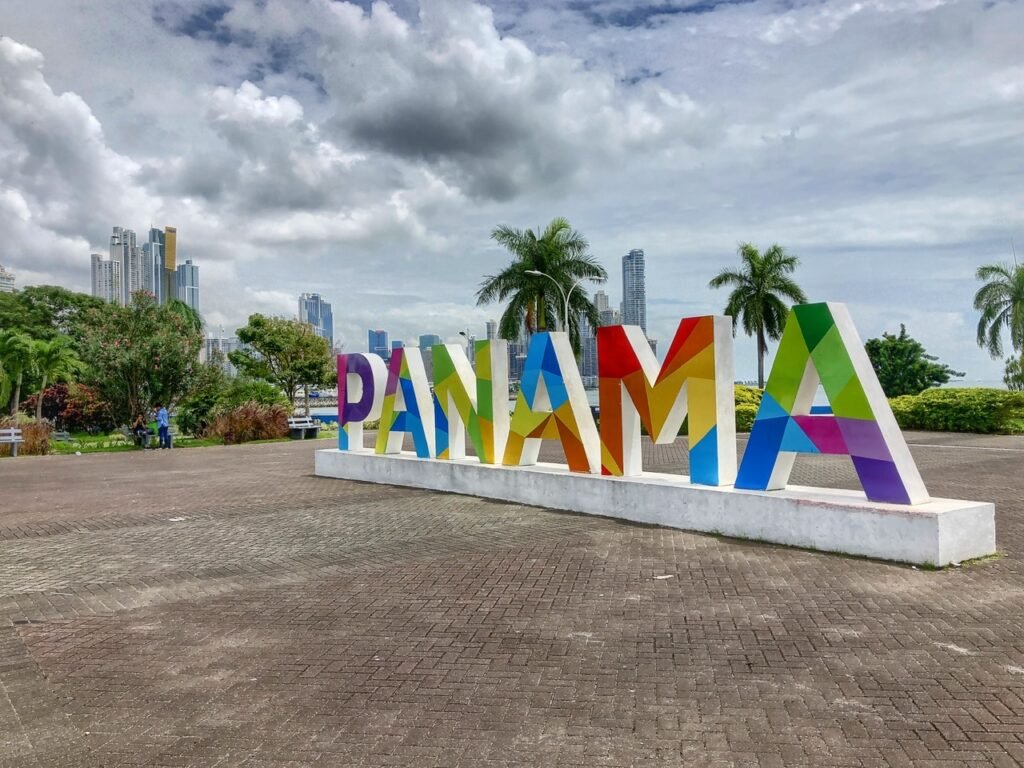
The token Panamá sign. After this walk, we had a wonderful time meeting up with Kris, from one of the FB travel groups we’re in. She’s an American digital nomad like us. The more you look for it, you realize just how many of us there actually are!
We were surprised how much wildlife we saw right in our neighborhood…including our first toucan in the country, as well coatis, also known as coatimundis or in Spanish, “gato solos.” Gato solo translates to “alone cat” which doesn’t make a lot of sense considering every time we’ve seen these raccoon-esque animals they’re in groups. Like raccoons, they seem to be quite the scavengers and we saw them burrowing into all kinds of trash piles. Oh, but they’re so very cute! And they’re not nocturnal so we got to see them easily several times.

The neighborhood where we stayed. Judging by the number of Happy Halloween signs we saw, it seemed that a lot of Americans must live here due to proximity to the embassy.




